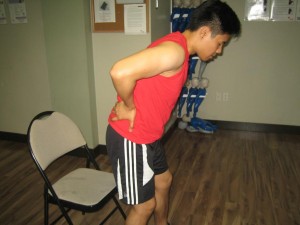If you are suffering from a painful osteoarthritis, it is good to know that you can do something about controlling and managing the pain more effectively. Osteoarthritis is a prevalent disease of the joint affecting more than 25 millions of Americans and the statistics continue to grow. It is a common form of an arthritis which is chronic in character. The chronic pain experienced by those affected by the condition is responsible for the significant loss of ability of the person to carry out his activities of daily living which makes it important for every person affected by the condition to learn how to manage their pain more appropriately.
The cause of pain in osteoarthritis
Osteoarthritis is a progressive disease of the joint which can cause significant destruction over the underlying tissues supporting the affecting joint over time. The process of pain in the condition can be brought about by different pathophysiological processes including the gradual destruction of the cartilage which is a layer of tissues supporting the joint during movement and damaged joint that may result to the symptoms of pain, swelling, warmth, redness and crepitus (grinding sound on the joint during movement). The supporting structures of the joint may become worn out usually because of repetitive movement of the affected joint. Unlike gout which is another form of arthritis where the pain usually occurs at night, the pain in osteoarthritis gets worse usually late in the afternoon. The pain may be accompanied by stiffness which makes joint movement more difficult to perform.

How pain in osteoarthritis affects activities of daily living (ADL)
The pain that is commonly felt in osteoarthritis can prevent a person to perform some activities normally. Osteoarthritis of the hip for instance can make it difficult for a person to get up from the bed or makes rising from a chair a painful activity to do. A painful wrist joint can also prevent you to carry out activities involving hand movements. According to CDC, hip osteoarthritis can be a lifetime condition and learning the proper pain management techniques can help you overcome the pain that can become disabling once not properly managed.
Pain management for osteoarthritis
Living with osteoarthritis pain is not normal but there are things that you can do in order to help relieve the pain through a proper pain management and control to improve your activities of daily living.
- Apply cold compress to the painful joint as a first aid treatment. A cold compress is a common pain management in osteoarthritis that is resorted to at the early stage of its symptoms and is useful when the joint is just beginning to swell. This will relieve the feeling of warmth around the joint area which is a sign of inflammation.
- Apply a hot compress for chronic pain. When the swelling subsides, applying a warm compress will help relax the affected muscles and soft tissues around the joint affected. The warmth coming from the hot compress can also provide minor anesthetic effects which help relieve the pain symptoms around the affected joint.
- Exercise your joint. Minor stretching and simple range of motion exercises will help strengthen the soft tissues supporting the joint. This will make them more resilient against tissue destruction which is a condition that causes the osteoarthritis pain to get worse.
- Massage your joint and the soft tissues around it. Massage can help improve the circulation around your joint which can help enhance the healing process of the injured soft tissues that cause the pain.
- Eat a balanced and healthy meal. Obesity can be a major cause for osteoarthritis and weight reduction can help reduce the risk for the condition to occur.
- Take pain medication with a doctor’s prescription. Pain medication is the most effective way of relieving joint pain. Make sure to take medicines prescribed by your doctor to ensure it is safe and free from the potential complications that may arise in case you have other medical conditions.
Managing Serious Bone / Joint Injuries Related to Osteoarthritis
Muscle, joint and pain injuries are common with osteoarthritis. Learn to recognize and manage these injuries by attending first aid training with a provider near you. Popular courses that include bone, joint and muscle injuries include occupational first aid and standard first aid.
References:
Arthritis. Centers for Disease Control and Prevention. Retrieved May 27, 2014 from http://www.cdc.gov/arthritis/resources/spotlights/lifetime-risk.htm.
Osteoarthritis. eMedicineHealth. Retrieved May 27, 2014 from http://www.emedicinehealth.com/osteoarthritis/article_em.htm

